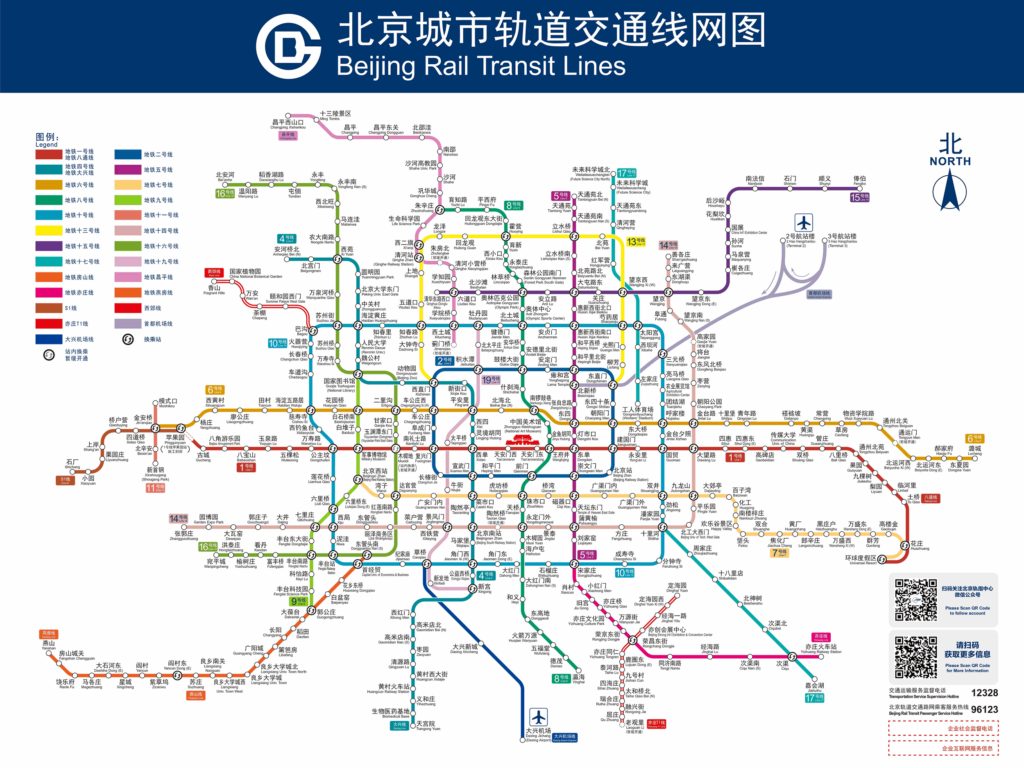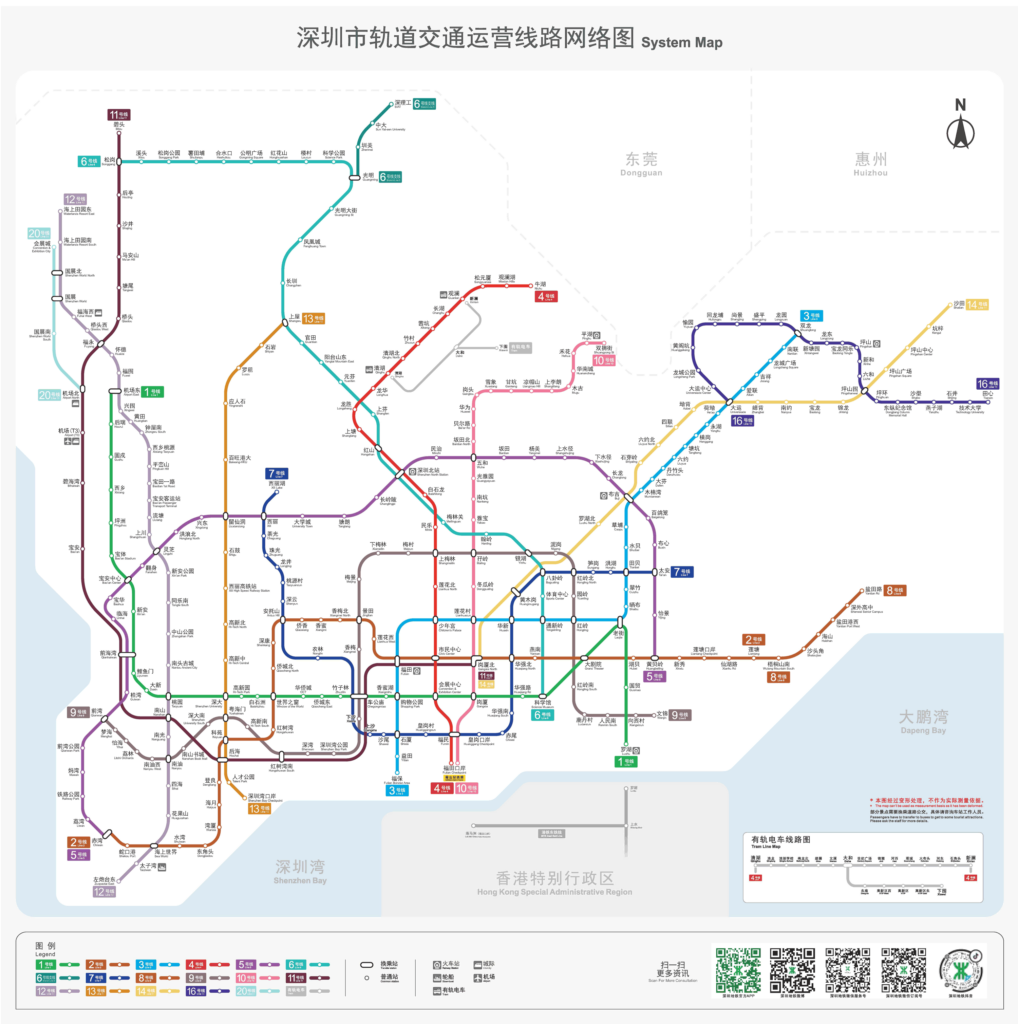Contents
Introduction:
China’s metro systems are renowned for their extensive coverage and efficient operation, serving as the ideal way to explore Chinese cities. As of February 2024, there are metro systems in operation in 55 cities across Mainland China. These cities include, but are not limited to, Beijing, Shanghai, Guangzhou, Shenzhen, Tianjin, Wuhan, Chengdu, Hangzhou, Zhengzhou, covering nearly all major economic and tourist centers. Each city’s metro network is designed to connect key commercial areas, tourist attractions, and more, providing passengers with a convenient means of intra-city travel. China boasts one of the most extensive and advanced metro systems in the world, with nearly every major city having a network that covers the city’s main areas. Understanding how to utilize this efficient and economical mode of transportation is crucial for foreign visitors coming to China for the first time. This article aims to provide detailed guidance for foreigners on how to choose the right China metro or Subway.
How Foreigners Can Use China’s Metro or Subway
For foreign visitors, navigating China’s metro systems is straightforward, even without knowledge of Chinese. Most city metro stations offer signage in English, and metro maps clearly indicate each stop. Purchasing tickets via automatic vending machines is simple, with machines typically offering an English interface and accepting cash, WeChat Pay, and Alipay. Furthermore, for foreigners working or living in China long-term, acquiring a metro card not only offers convenience but also allows for additional discounts. Currently, metro stations in all 55 cities are equipped with English service instructions, helping non-Chinese speakers navigate easily.
Utilizing the Metro or Subway as a Foreigner
Riding the metro in China is highly convenient for foreigners. Firstly, tickets can be purchased with cash at automatic ticket vending machines. Additionally, to adapt to the digital lifestyle, passengers can also choose mobile payment methods like WeChat or Alipay, which are particularly common in China.
If you are in China for work as a foreigner and need to claim expenses for metro travel, don’t worry. You can purchase tickets from customer service centers at each station and obtain receipts.
How to Buy a China Metro or Subway Ticket
Following the introduction of the China e-CNY APP in 2024, the self-service ticket vending machine screens now feature a new payment option for the digital yuan alongside the existing QR code and cash payment methods. By selecting the digital yuan payment button, a payment QR code is generated. You then simply open the China e-CNY APP on your smartphone, scan the QR code to make the payment, and receive a subway single journey ticket.
Purchasing Metro Tickets with WeChat Pay, Alipay, and the Metro Metropolis APP
For foreign visitors in China, riding the metro is no longer limited to cash payments. With the widespread adoption of digital payment technologies, WeChat Pay and Alipay offer convenient payment alternatives for foreigners, eliminating the need to rely solely on cash. Additionally, by downloading and using the “Metro Metropolis” APP, passengers can not only purchase metro tickets directly but also easily switch between many cities in China, greatly enhancing the convenience and efficiency of travel.
The “Metro Metropolis” APP is available for download on the App Store. It integrates subway maps, real-time itinerary planning, and electronic payment features, making ticket purchase and metro rides simpler than ever. With this APP, whether for daily commutes or travel exploration, foreign visitors can enjoy a seamless metro riding experience. Whether you are navigating through the busy streets of Beijing, the bustling areas of Shanghai, or the high-tech zones of Shenzhen, the Metro Metropolis APP becomes your intimate assistant, making your journey in China more relaxed and enjoyable.
What to Do If You Encounter Problems in China Metro?
Riding the metro in China, unlike in some other countries, is very safe. Thus, it’s almost impossible to encounter thieves within the metro.
In Case You Lose Your Wallet in the Metro
Despite the high safety standards of China’s metro systems, if a foreign visitor unfortunately experiences an incident like theft, the first step is to stay calm. It’s important to know that incidents of pickpocketing inside Chinese metros are extremely rare, unlike in many other countries. Metro stations are equipped with numerous surveillance cameras, and there are security personnel patrolling to ensure passenger safety.
If an emergency occurs, immediately seek assistance from station staff or head directly to the service center. Each station has a clearly marked customer service center where staff will provide necessary help and guidance. Additionally, foreign visitors can call the police helpline 110 to report theft, and the police will respond quickly to provide assistance.
Safety Tips for Riding China’s Metro:
The safety and comfort of China’s metros are recognized worldwide. To ensure your trip is even smoother, foreign visitors are advised to pay attention to the following points while riding the metro:
- Keep personal belongings secure, especially during crowded periods.
- Familiarize yourself with the routes and stations you’ll be visiting, as well as how to use mobile payments for ticket purchases.
- Pay attention to safety instructions and emergency exit signs in stations and carriages.
- Don’t hesitate to seek help from station staff if you encounter any problems.
China Beijing Metro
Beijing, the capital of China, is served by a metro system that is a key component of the urban rail transit in the People’s Republic of China’s Beijing Municipality. The Beijing Metro includes 27 operational lines, covering 12 municipal districts of Beijing and Guangyang District of Langfang, Hebei, with 490 operational stations and a total length of 836 kilometers. As of January 2024, the Beijing Metro holds the title for the longest operational length in China and ranks among the longest in the world. Since 2014, the average daily passenger flow on workdays has exceeded 10 million, making it one of the primary modes of transportation for Beijing residents. On July 12, 2019, it set a record for the highest daily passenger flow at 13.7538 million. In 2022, the Beijing Metro had an annual passenger flow of 2.262 billion. As of December 2023, there are 10 metro lines under construction in Beijing. By 2025, the Beijing Metro is expected to form a network of 30 operational lines with a total length of 1177 kilometers.
China Shanghai Metro
The Shanghai Metro serves the city of Shanghai and the greater Shanghai metropolitan area, marking it as the world’s longest urban rail transit system by route length and a member of the Community of Metros (CoMET). The first line, Shanghai Metro Line 1, began operations on May 28, 1993, making Shanghai the third city in mainland China and the first in the southern region to have a metro system.
Shanghai’s metro system stands out for having the world’s longest total route length, the largest metro network scale, fully automated driving lines, and the longest single-line operation among all cities with metro systems in the country. With 20 lines crisscrossing the city, the Shanghai Metro is undoubtedly the simplest and fastest way to explore Shanghai.
It connects all corners of Shanghai’s city center, making it an essential mode of transport for tourists and locals alike. The Shanghai Metro’s design and construction are highly advanced, representing a pinnacle of urban rail transit development in China. It utilizes some of the most sophisticated technology and equipment available, including automated trains, high-speed signaling systems, and intelligent fare collection systems. These technologies enhance the safety, reliability, and efficiency of the metro, making it a shining example of Shanghai’s modern achievements.
Furthermore, the Shanghai Metro is known for its high quality of service and customer satisfaction. The metro company has a professional service team dedicated to addressing passengers’ needs with enthusiasm and professionalism.
Additionally, the Shanghai Metro is environmentally friendly, employing numerous eco-friendly construction methods and operational practices such as energy conservation and green building technologies. These efforts not only protect the environment but also contribute significant economic and social benefits to the city.
China Shenzhen Metro
The Shenzhen Metro serves the city of Shenzhen, Guangdong Province, with its first line opening on December 28, 2004. The system’s scale has reached 16 lines (including trams) with a total operational length of 530 kilometers (518.35 kilometers for metro lines and 11.7 kilometers for trams). This expansion means Shenzhen has become the second city in Guangdong Province, following Guangzhou, to surpass 500 kilometers of metro operation. Nationally, other cities with over 500 kilometers of metro operation include Shanghai, Beijing, Chengdu, and Hangzhou.
China’s metros are exemplary, with other notable city metros demonstrating once you arrive in China, the convenience and efficiency of using these systems.
Conclusion
At GWBMA, we’re dedicated to providing practical information to foreign visitors to help them make the most of China’s advanced metro systems. Through this guide, we hope not only to ensure your safe and easy travel between China’s major cities but also to enhance your experience with the convenience and comfort these journeys offer. Remember, should you encounter any issues, there are numerous resources and services available to assist you, ensuring your safety and comfort.
As one of the safest and most convenient public transportation systems in the world, China’s metro welcomes visitors from across the globe. Whether you’re here for tourism or work, the information provided should help you understand the basics of China’s metro, how to use it, and what to do in emergencies. We hope every foreign friend can explore China’s vibrant city life and culture worry-free with this efficient and modern mode of transport. GWBMA is always here to support and assist you on your journey in China. Welcome aboard China’s metro, and start your exploration journey!






